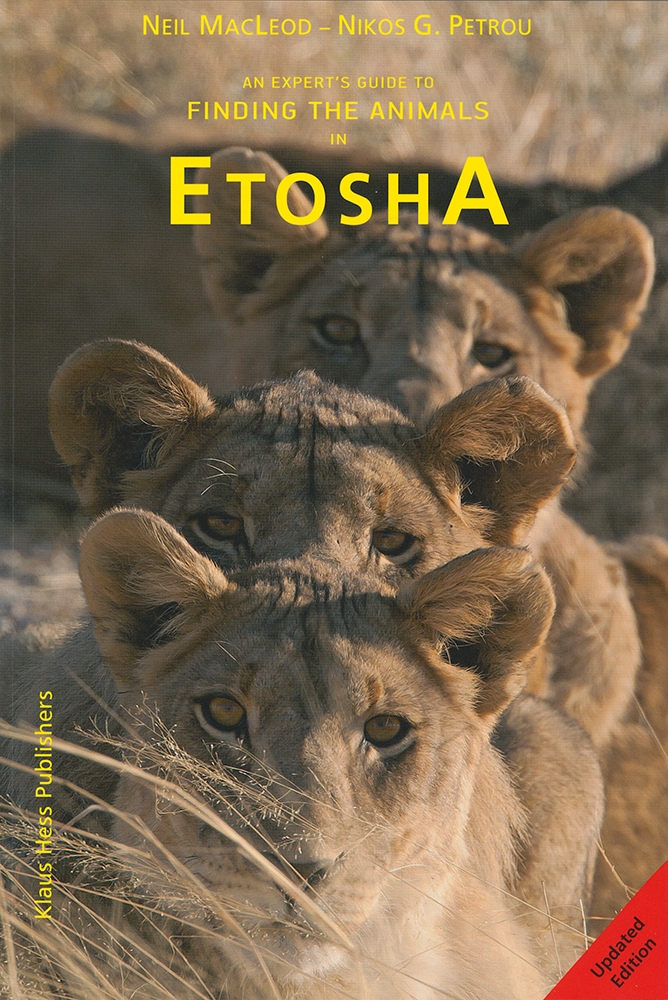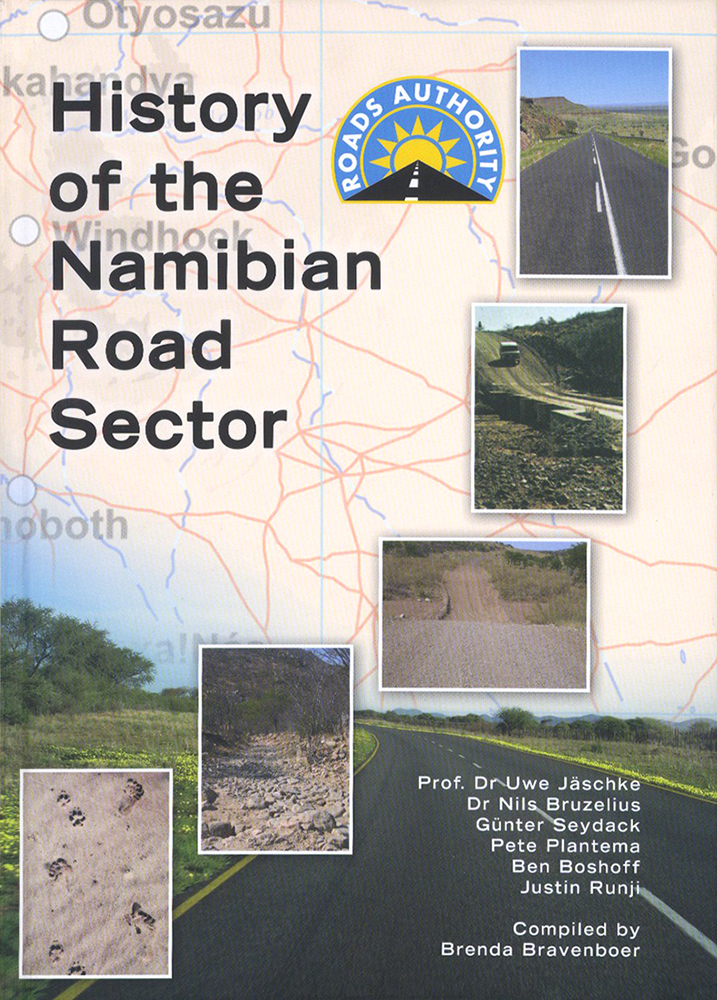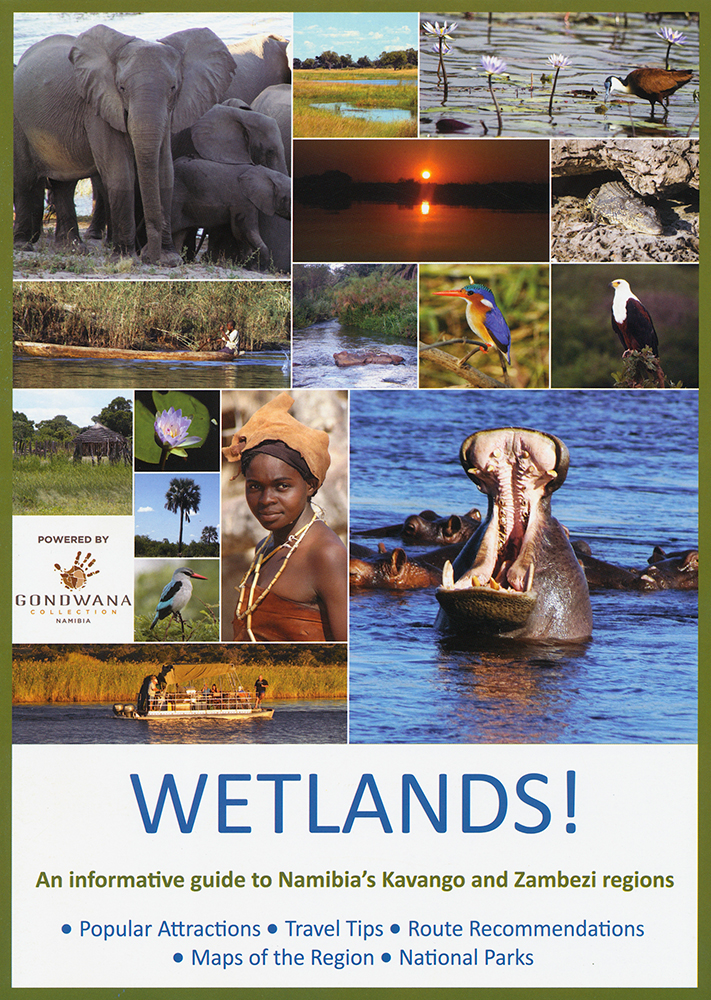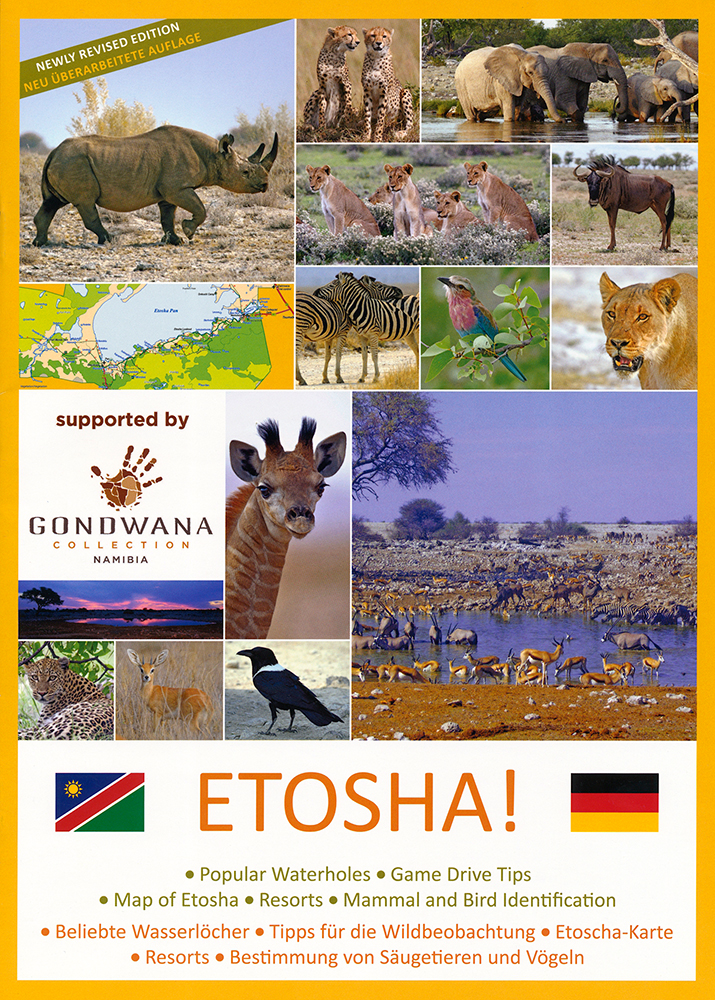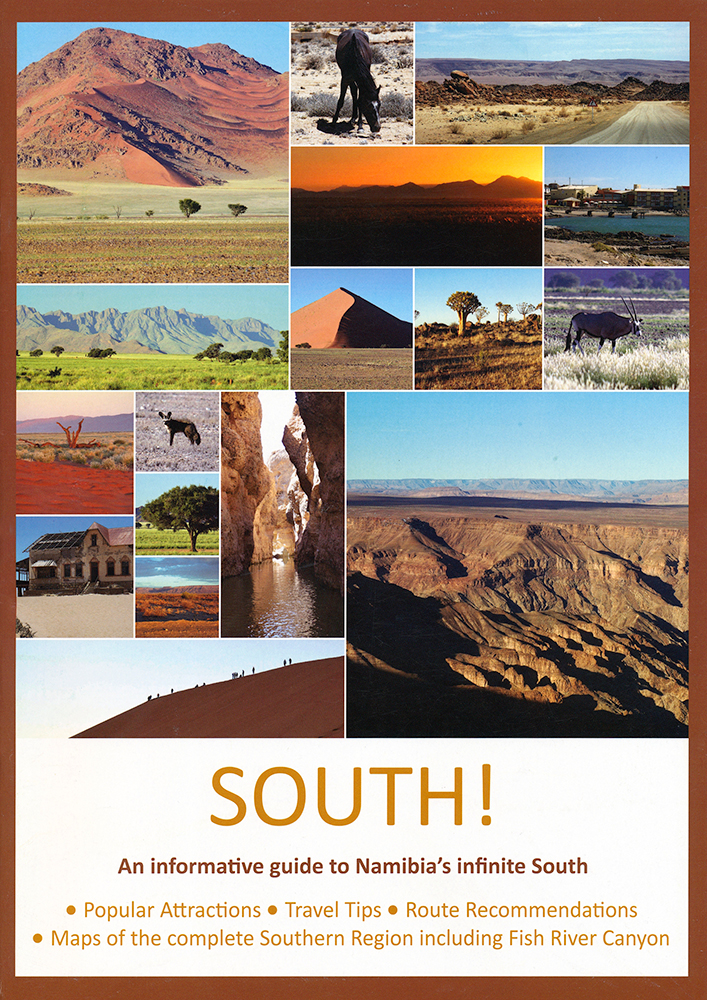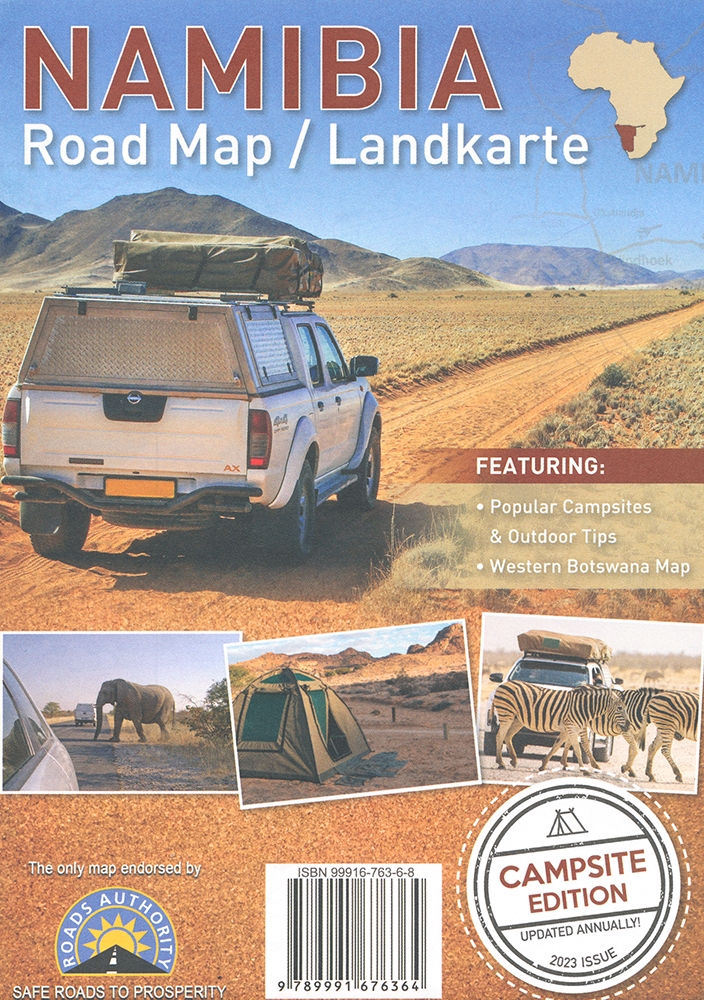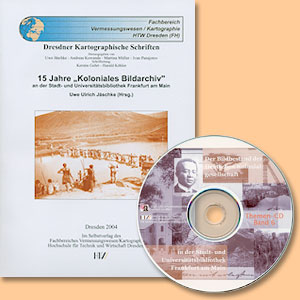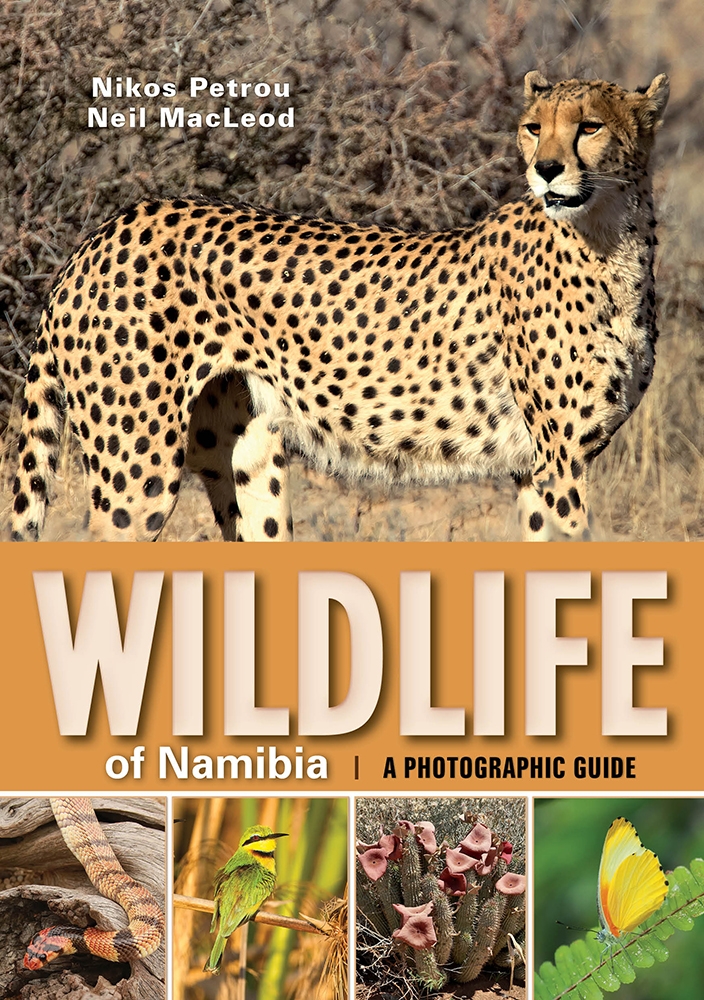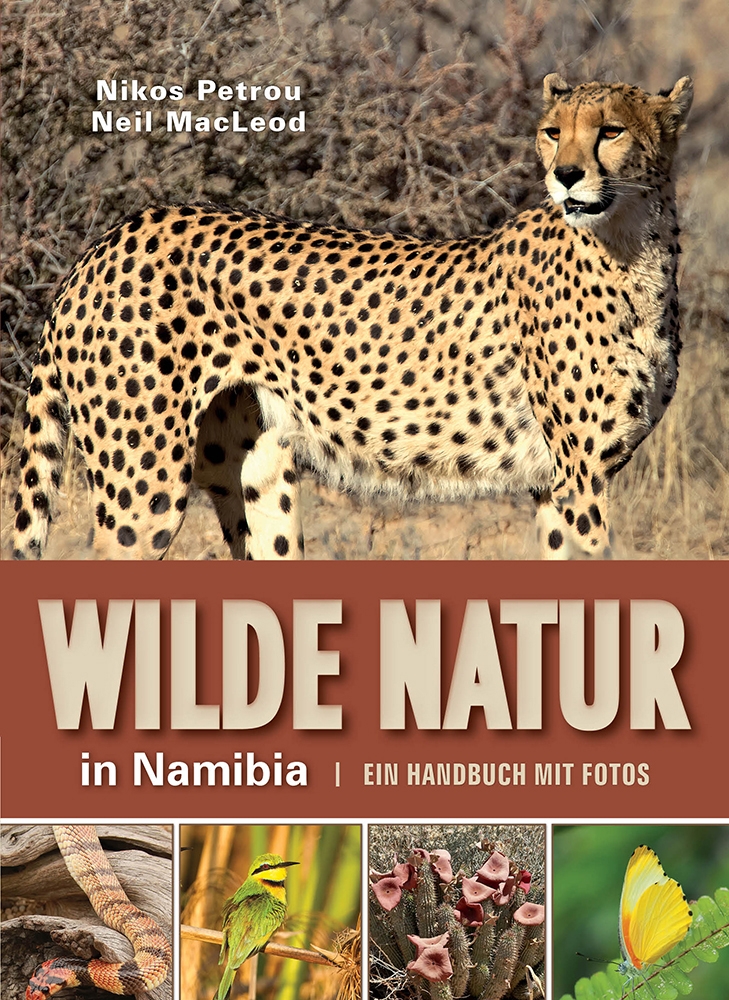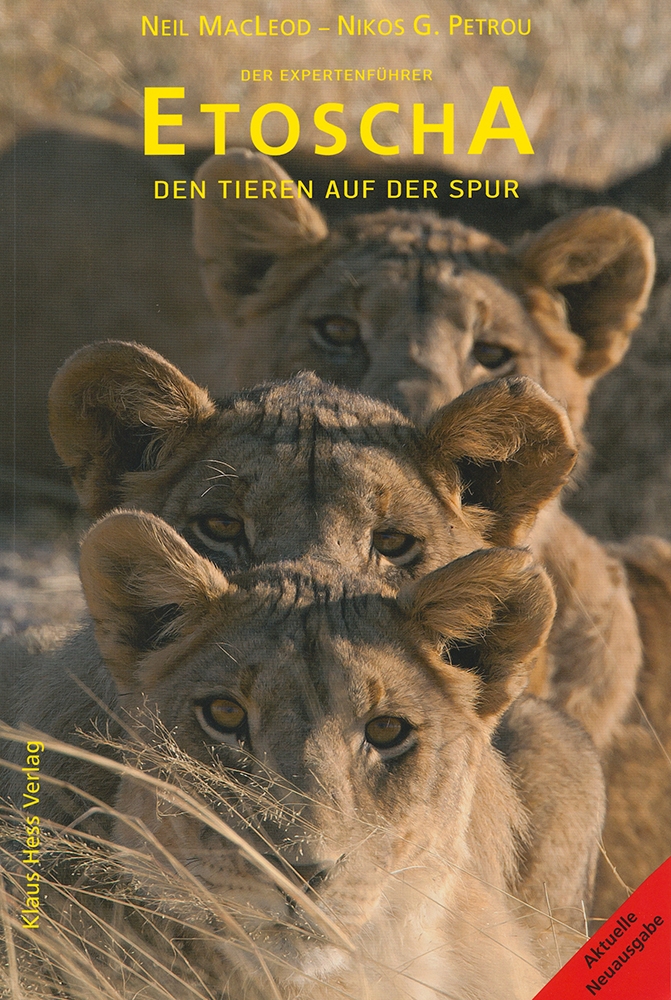An Expert's Guide to Finding the Animals in Etosha, by Neil MacLeod and Nikos G. Petrou
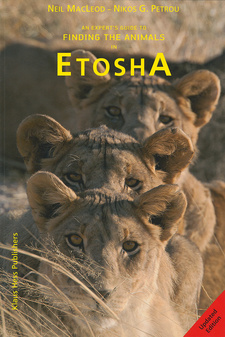
An Expert's Guide to Finding the Animals in Etosha, by Neil MacLeod and Nikos G. Petrou. Klaus Hess Publishing, 2nd edition. Göttingen, Germany / Windhoek, Namibia 2019. ISBN 9783933117854 / ISBN 978-3-933117-85-4 (Europe) / ISBN 9789991657370 / ISBN 978-99916-57-37-0 (Namibia)
The following excerpt from An Expert's Guide to Finding the Animals in Etosha, by Neil MacLeod et al., provides a brief history lesson on the Etosha National Park in Namibia.
Nikos G. Petrou Neil MacLeod Uwe Ulrich Jäschke
Etosha National Park derives its name from the vast, clay-covered central pan that appears almost white. The springs around the periphery of the pan were known and utilised by the indigenous communities, namely Owambo, Herero, and the nomadic Haillom Bushmen of the Kalahari. The first Europeans to describe the pan and its environs were Charles John Andersson and Sir Francis Gal-ton, who reached present-day Namutoni in 1851. In the mid-1870s a group of Dors-land Trekkers, on their long journey from the Transvaal (part of South Africa today) to Angola, moved through the area from east to west, even settling near Rietfontein for a couple of years. The remains of stone dwellings and the memorial to Johanna Alberts near the waterhole, where she died in 1876, attest to their presence in the area. During the 1897 rinderpest epidemic, veterinary control posts were established at Namutoni and Okaukuejo. They later served as police frontier posts and as fortified military outposts for the German colonial administration. Fort Namutoni was destroyed during the Owambo uprising in 1904, but it was rebuilt the following year. In 1907, alarmed by the impact of unrestricted hunting on wild animals, the then governor of German South West Africa, Dr. Friedrich von Lindequist, proclaimed the three Etosha Game Reserves. In addition to the present day Park, the protected zone included an area north of Grootfontein, most of present-day Kaokoveld and Damaraland to the Atlantic coastline, and large tracts of the Namib Desert to the south. Its enormous size - totalling almost 90,000 km2 - made it the largest protected area in the world at the time and ensured protection of the stunning fauna and flora with no restriction to animal migrations. Conservation and game management projects were initiated in the decades that followed, and the tourist infrastructure was established. Okaukuejo was transformed to a rest camp in 1952 and Namutoni followed in 1958. With the advent of large-scale tourism, a third camp was established at Halali in 1967. Unfortunately, during this period most of the protected area was de-proclaimed (in 1947 and in 1962), the portions reverting to the traditional communities that occupied them before, and the reserve shrunk by almost 80% to its present-day size. The boundaries were formalised in 1973 and the Park was fenced-in. The encircling fence disrupted the migration patterns of most herbivores, forcing them to satisfy their needs of forage and water within the Park during both the wet and the dry seasons. Water determines the precarious balance between animals and resources. Water from subterranean aquifers appears naturally above ground in Etosha in three ways: as contact springs, mostly around the periphery of the pan in locations where the water-rich limestone abuts impervious clay forcing water to seep out; as artesian springs, usually occurring in limestone hillocks, slightly higher than the surrounding grounds; and as water-level springs in places where the ground has dipped down to the water table through subsidence or the collapse of underground cave roofs. In addition to the natural springs, numerous artificial waterholes, fed by boreholes, have been created to sustain animals in otherwise dry areas. [...]
This is an excerpt from An Expert's Guide to Finding the Animals in Etosha, by Neil MacLeod.
Title: An Expert's Guide to Finding the Animals in Etosha
Author: Neil MacLeod
Photography: Nikos G. Petrou
Cartography: Uwe Ulrich Jäschke
Publisher: Klaus Hess Verlag
2nd edition. Göttingen, Germany / Windhoek, Namibia 2019
ISBN 9783933117854 / ISBN 978-3-933117-85-4 (Europe)
ISBN 9789991657370 / ISBN 978-99916-57-37-0 (Namibia)
Softcover, 20 x 30 cm, 96 pages, 294 colour photos, 5 colour maps
MacLeod, Neil und Petrou, Nikos G. und Jäschke, Uwe Ulrich im Namibiana-Buchangebot
An Expert's Guide to Finding the Animals in Etosha
The aim of An Expert's Guide to Finding the Animals in Etosha is to increase the possibilities of sighting game.
History of the Namibian Road Sector
This an impressive, most interesting documentation of history and developement of the Namibian road sector.
Wetlands! Namibia's Kavango and Zambezi Regions (Projects & Promotions)
Wetlands! An informative guide to Namibia's Kavango and Zambezi Regions published by Projects & Promotions.
Etoscha! Wasserlöcher, Wildbeobachtung, Karten, Resorts, Tierbestimmung
Etoscha! ist ein Regionalreiseführer für den Etoscha-Nationalpark in Namibia mit Wasserlöchern, Tips für die Wildbeobachung, Karten, Resorst und mit Übersichten zur Tierbestimmung.
South! Guide to Namibia's infinite South
South! Guide to Namibia's infinite South is a well-made manual for easy travelling the region.
Namibia Road Map (Projects & Promotions)
Die von Projects & Promotions herausgegebene Namibia-Karte (1:2.000.000) gilt als beste und ausgereifteste Straßenkarte für Namibia und das westliche Botswana.
15 Jahre Koloniales Bildarchiv
15 Jahre Koloniales Bildarchiv: Der zur Zeit einzige Beitrag zur Restaurierung und Erfassung des Kolonialen Bildarchivs in Frankfurt.
Wildlife of Namibia: A Photographic Guide
Wildlife of Namibia is an easy-to-use guide to Namibia’s most conspicuous and interesting mammals, birds, reptiles, invertebrates and plants.
Wilde Natur in Namibia
Wilde Natur in Namibia: ein Bestimmungshandbuch für Säugetiere, Vögel, Reptilien, Wirbellose, Flora und Flechten in Namibia.
Der Expertenführer Etoscha. Den Tieren auf der Spur
Der Expertenführer für Etoscha ist ein aktueller und ergiebiger Ratgeber mit 294 Fotos der Tiere, denen sie dort begegnen können.

